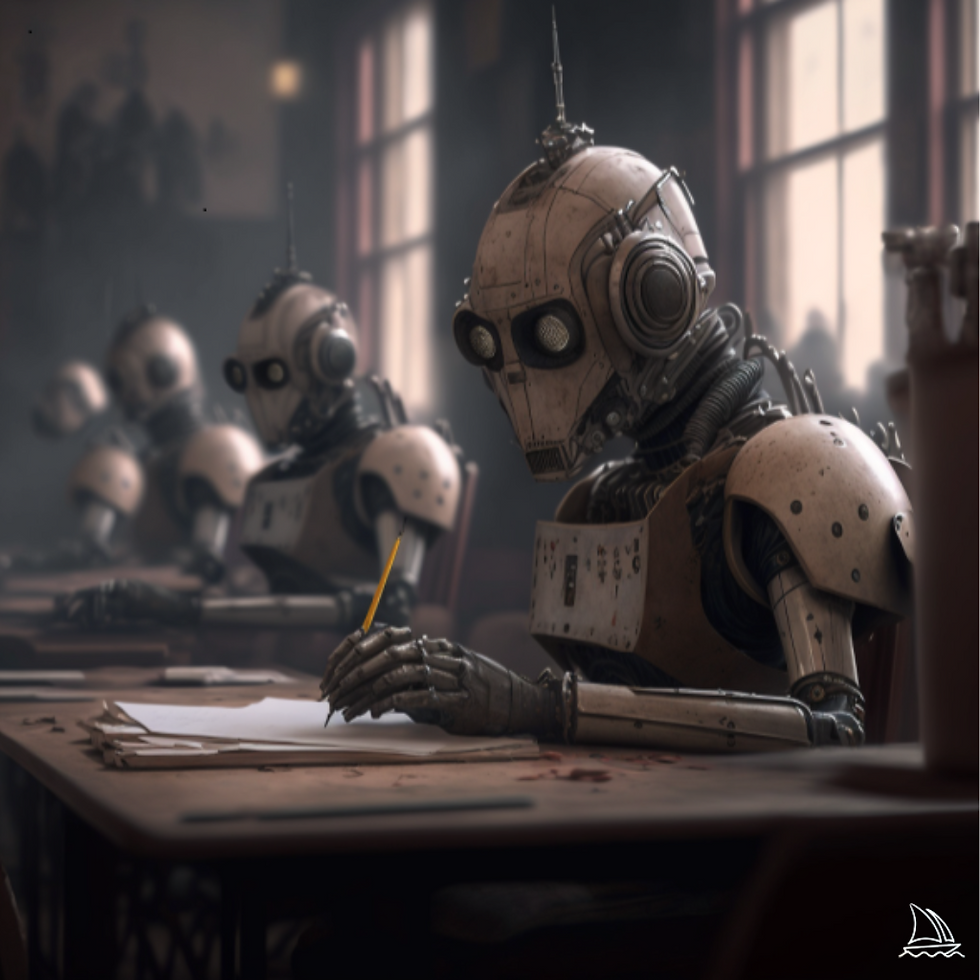ChatGPT: Evolution, Revolution of Conversational AI
- Team PixelPulse
- Aug 16, 2023
- 4 min read
Updated: Sep 13, 2023

Picture this: you're about to embark on a journey into the realm of artificial intelligence, where computers not only understand your words but also respond with astonishingly human-like intelligence. Welcome to the captivating realm of ChatGPT!
What is ChatGPT?
ChatGPT is a revolutionary creation by OpenAI, a brainchild born from the marvels of machine learning and language processing. In simple terms, ChatGPT is an advanced AI language model developed by OpenAI. It's reshaping how we interact with AI.
Understanding ChatGPT and How it Works
At its core, ChatGPT is a language model built upon the GPT (Generative Pre-trained Transformer) architecture, specifically GPT-3.5. This architecture is designed to understand and generate human-like text based on the patterns it learns from massive amounts of text data. What sets ChatGPT apart is its ability to generate coherent and contextually relevant responses, making it a natural fit for conversational interactions.
At its heart, ChatGPT operates by predicting the next word or phrase in a given text based on the patterns it has learned during training. This process involves several layers of computation, including attention mechanisms and transformer blocks, which allow the model to understand the relationships between different words and generate coherent responses. The "pre-trained" aspect of GPT means that the model is already familiar with a wide range of language patterns and can generate meaningful content even with minimal additional training.
The history of ChatGPT is intertwined with the evolution of OpenAI's GPT series of language models. Here's a brief overview of its development:
Evolution of ChatGPT
GPT-1 (2018): The first step, showing potential but limited coherence.
GPT-2 (2019): Released with hesitation due to its size and capabilities, sparking debates on AI ethics.
GPT-3 (2020): A leap forward with 175 billion parameters, demonstrating impressive text generation abilities.
ChatGPT- (2021): OpenAI introduced a version optimised for interactive conversations, refining its fine-tuning process.
ChatGPT- 3.5 (2022): Designed for conversations, questions and tasks. Accessible to OpenAI account holders. Articulate on diverse topics, yet criticised for occasional accuracy inconsistencies.
ChatGPT- 4 (2023): ChatGPT 4 is much more advanced since the GPT 4 engine powers it, which is multimodal. ChatGPT 4 can now understand and process even images and it accepts both text and image prompts.
Ongoing Development: OpenAI continuously improved ChatGPT, tackling biases, enhancing context retention and refining domain-specific responses.
From curiosity to practical tool, ChatGPT's evolution sparks ethical discussions and reshapes human-AI interaction.
The creation of ChatGPT is a collaborative achievement led by OpenAI, an organisation founded by visionaries like Elon Musk, Sam Altman and Ilya Sutskever. A team of research scientists, engineers and AI experts worked tirelessly behind the scenes, while ethicists and safety specialists ensured responsible AI development. The project's success also relied on community feedback and open-source collaboration, emphasising the collective effort that drove ChatGPT's evolution.
Furthermore, In July 2019, Microsoft backed OpenAI with $1 billion and the investment made Microsoft the “exclusive” provider of cloud computing services to OpenAI. Microsoft said that Azure will continue to serve as OpenAI's exclusive provider.
Ethical Considerations
While ChatGPT's capabilities are impressive, they also raise important ethical considerations. The model's responses are generated based on the data it was trained on, which means that it can inadvertently reproduce biases present in that data. Efforts are being made to ensure that ChatGPT's responses are fair, unbiased and respectful. OpenAI has also introduced safety measures to prevent the model from generating inappropriate or harmful content.
As the technology continues to evolve, we can expect more refined versions that better understand context, generate even more accurate responses and address ethical concerns more effectively. The future might see ChatGPT integrated into our daily lives in ways we can't yet imagine, from personal assistants to creative collaborators.
Commercial Application of ChatGPT
Customer Support Enhancement: Businesses deploy ChatGPT as a 24/7 virtual assistant, swiftly addressing customer inquiries, troubleshooting issues, and offering instant support, thus elevating customer satisfaction.
Content Generation: Content creators harness ChatGPT's prowess to ideate, draft, and refine articles, blog posts, marketing materials and social media content, streamlining the content creation process.
E-commerce Assistance: ChatGPT aids shoppers by providing product recommendations, answering questions about specifications, prices, and availability, enhancing the online shopping experience.
Language Translation Services: In the era of global connectivity, ChatGPT contributes to language translation services, breaking down communication barriers and fostering cross-border interactions.
Personalized Marketing: Leveraging data insights, ChatGPT tailors marketing messages to individual preferences, optimising engagement and conversion rates.
Educational Tools: ChatGPT serves as an interactive tutor, explaining concepts, answering questions and offering practice exercises, enhancing the learning experience.
Software Development Aid: Developers turn to ChatGPT for code suggestions, debugging help and explanations of programming concepts, boosting coding efficiency.
Healthcare Consultation: ChatGPT assists healthcare providers with patient information queries, symptom assessment and offering preliminary medical advice.
Human Resources Assistance: From initial candidate screenings to answering employee queries, ChatGPT simplifies HR operations.
Companies like Microsoft, Duolingo and many more, that have tried to implement the impressive chatbot or its generative pre-trained transformer either into their products or into their workforces.

ChatGPT’s commercial applications embrace diverse industries, offering efficiency, scalability and improved user experiences. As AI continues to evolve, its role in reshaping business processes and enhancing customer interactions is poised to expand even further.
As ChatGPT continues to evolve, its story is far from over. With new versions, integrations and advancements on the horizon, the potential for AI to become an even more integral part of our lives is undeniable. While challenges persist, the journey of ChatGPT exemplifies the boundless possibilities when humans and AI collaborate to shape a future that combines the best of technology and humanity.
Connect with us at PixelPulse Digital to boost your User Acquisition efforts so that we can help you drive more engaging users at scale.


![Mobile Advertising Fraud: Types and Intricacies [Part-IV]](https://static.wixstatic.com/media/4db96d_9940c7af71f6456ba941e10fb8d8a583~mv2.png/v1/fill/w_980,h_980,al_c,q_90,usm_0.66_1.00_0.01,enc_avif,quality_auto/4db96d_9940c7af71f6456ba941e10fb8d8a583~mv2.png)